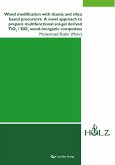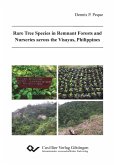Wood Polymer Composites are a new group of hybrid materials, which combine the advantages of synthetic polymers such as polyolefines and natural polymers such as wood; whereas the synthetic polymer is used as matrix material and the wood as reinforcement material or filler. As matrix material, principally every thermoplastic polymer with a processing temperature below 200°C can be used due to the temperature sensivity of wood. Wood Polymer Composites are processed typically with processing technologies from the plastic industry such as extrusion and injection molding. The present study was conducted to explore the possibility of wood particle modification with different types of silanes. It was the aim to contribute the silanes as compatibilizers or coupling agent and therefore improve the mechanical properties and the resistance against water. Norway spruce (Picea abies) as representative wood species was used in three different particle types. The size distribution for the wood particles ranges from 70-2500 µm. Four commercial available silanes with various functional groups (amino, di-amino, alkyl) were used as modification agents. The concentrations varied between 1.5%, 3.0%, 4.5% and 7.5%. As reference system commonly used maleated acid anhydride based coupling agents were used. The pre-treated wood particles were compounded via extrusion with polypropylene and samples were produced via injection and compression molding. The following properties were tested; tensile, bending, and impact strength, water uptake (cold and boiling water test), descent rate, weathering tests and durability test against basidiomycetes.
Bitte wählen Sie Ihr Anliegen aus.
Rechnungen
Retourenschein anfordern
Bestellstatus
Storno








